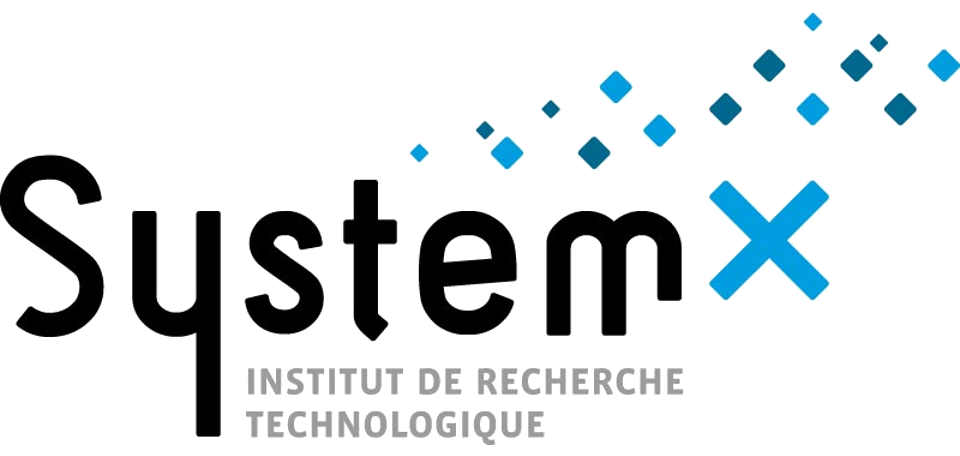
Large-scale agent-based transport simulations in France
Sebastian Hörl
17 October 2025
Presentation at CIRED

The street in 1900


http://www.loc.gov/pictures/item/2016800172/
The street today
https://commons.wikimedia.org/wiki/File:Atlanta_75.85.jpg


The street of tomorrow?
Julius Bär / Farner


Macroscopic transport modeling


Classic four-step models
- Travel demand generated in (large) zones
- Focus on large flows between these zones
- For the morning or evening commute
- For limited user groups
- Question: Where to add capacity?


Macroscopic transport modeling


Classic four-step models
- Travel demand generated in (large) zones
- Focus on large flows between these zones
- For the morning or evening commute
- For limited user groups
- Question: Where to add capacity?



Macroscopic transport modeling


Classic four-step models
- Travel demand generated in (large) zones
- Focus on large flows between these zones
- For the morning or evening commute
- For limited user groups
- Question: Where to add capacity?

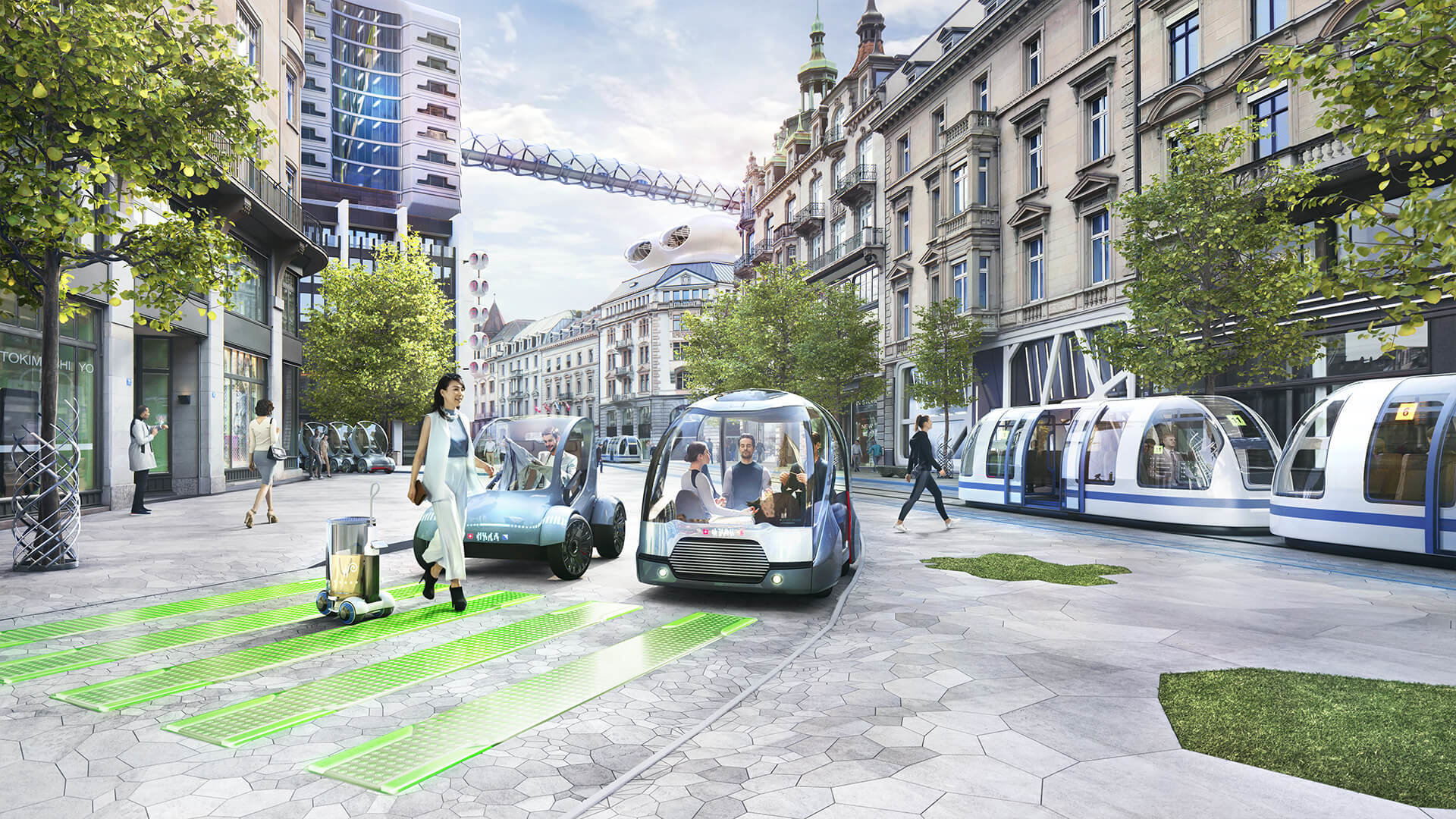


Agent-based transport modeling










0:00 - 8:00
08:30 - 17:00
17:30 - 0:00
0:00 - 9:00
10:00 - 17:30
17:45 - 21:00
22:00 - 0:00





- Individual travellers with daily activities
- Moving from one activity to another
- Simulation of the entire day
- Highly detailed interaction between travellers and services
- Multitude of (design) questions can be answered


Agent-based transport modeling
How to set up agent-based transport simulations?
* with reproducible results
* in a replicable way


Transport modeling chain
Raw data
Synthetic population
Agent-based transport simulation
Use cases
Results


Transport modeling chain
Raw data
Synthetic population
Agent-based transport simulation
Use cases
Results


Synthetic populations: Introduction
Definition
- Representation digital version of the real population of a territory
- Persons (single-level) or households with persons (two-level) population
- Households and persons with individual attributes
- Persons with individual activity chains



0:00 - 8:00
08:30 - 17:00






0:00 - 9:00
10:00 - 17:30
17:45 - 21:00
22:00 - 0:00



17:30 - 0:00


Synthetic populations: Pipeline
Pipeline
- Households and persons
- Primary activity locations
- Activity chains
- Secondary activity locations

RP

BAN

BD-TOPO

MOBPRO

MOBETUD

SIRENE

BPE

ENTD
Data
Goals
- Generate individual households and persons
- Choose a distinct place of residence


French population census
| Household ID | Person ID | Zone | Age | Sex | ... | Weight |
|---|---|---|---|---|---|---|
| 512 | 1 | 75013 | 35 | f | ... | 3.2 |
| 512 | 2 | 75013 | 32 | m | ... | 3.2 |
| 516 | 1 | 75019 | 42 | m | ... | 4.1 |
| ... | ... | ... | ... | ... | ... |
Upsampling of persons using Truncate-Replicate-Sample (TRS)


Synthetic populations: Pipeline
Pipeline
- Households and persons
- Primary activity locations
- Activity chains
- Secondary activity locations

RP

BAN

BD-TOPO

MOBPRO

MOBETUD

SIRENE

BPE

ENTD
Data
Goals
- Generate individual households and persons
- Choose a distinct place of residence


Sampling by number of housing units per building

French bulding database

French address database


Synthetic populations: Pipeline
Pipeline
- Households and persons
- Primary activity locations
- Activity chains
- Secondary activity locations
Data
Goal
- Choose work places and education locations

RP

BAN

BD-TOPO

MOBPRO

MOBETUD

SIRENE

BPE

ENTD




French work
commuting matrix


Synthetic populations: Pipeline
Pipeline
- Households and persons
- Primary activity locations
- Activity chains
- Secondary activity locations
Data
Goal
- Choose work places and education locations

RP

BAN

BD-TOPO

MOBPRO

MOBETUD

SIRENE

BPE

ENTD


French work
commuting matrix

National enterprise
database
with facilities by number of employees




Synthetic populations: Pipeline
Pipeline
- Households and persons
- Primary activity locations
- Activity chains
- Secondary activity locations
Data
Goal
- Choose work places and education locations

RP

BAN

BD-TOPO

MOBPRO

MOBETUD

SIRENE

BPE

ENTD

French education
commuting matrix

Permanent facility
database
with education facilities and attendants





Synthetic populations: Pipeline
Pipeline
- Households and persons
- Primary activity locations
- Activity chains
- Secondary activity locations
Data
Goal
- Generate activity sequences (type, start and end time) for each person


RP

BAN

BD-TOPO

MOBPRO

MOBETUD

SIRENE

BPE

ENTD
Statistical Matching


National Household Travel Survey 2008

(Local Household Travel Surveys)


Synthetic populations: Pipeline
Pipeline
- Households and persons
- Primary activity locations
- Activity chains
- Secondary activity locations
Data
Goals
- Choose locations of secondary (shopping, leisure, ...) activities


RP

BAN

BD-TOPO

MOBPRO

MOBETUD

SIRENE

BPE

ENTD
Hörl, S., Axhausen, K.W., 2021. Relaxation–discretization algorithm for spatially constrained secondary location assignment. Transportmetrica A: Transport Science 1–20.


Synthetic populations: Pipeline
Pipeline
- Households and persons
- Primary activity locations
- Activity chains
- Secondary activity locations
Data
Output
- Three main tables: households, persons, activities
- Supplementary tables: commutes, trips, ...

RP

BAN

BD-TOPO

MOBPRO

MOBETUD

SIRENE

BPE

ENTD
| household_id | income | number_of_cars | ... |
|---|---|---|---|
| 1024 | 85,000 | 2 | ... |
| household_id | person_id | age | sex | employed | ... |
|---|---|---|---|---|---|
| 1024 | 1 | 34 | f | true | ... |
| 1024 | 2 | 36 | m | true | ... |
| household_id | person_id | activity_id | start_time | end_time | type | location | ... |
|---|---|---|---|---|---|---|---|
| 1024 | 1 | 1 | 00:00 | 08:00 | home | (x, y) | ... |
| 1024 | 1 | 2 | 09:00 | 18:00 | work | (x, y) | ... |
| 1024 | 1 | 3 | 19:00 | 24:00 | home | (x, y) | ... |


Synthetic populations: Pipeline
Pipeline
- Households and persons
- Primary activity locations
- Activity chains
- Secondary activity locations
Data
Output
- Three main tables: households, persons, activities
- Supplementary tables: commutes, trips, ...

RP

BAN

BD-TOPO

MOBPRO

MOBETUD

SIRENE

BPE

ENTD



Place of residence
Commuting trips
Hourly work activities



Synthetic populations: Pipeline
Pipeline
- Households and persons
- Primary activity locations
- Activity chains
- Secondary activity locations
Data

RP

BAN

BD-TOPO

MOBPRO

MOBETUD

SIRENE

BPE

ENTD
Validation
- Comparison with census data, HTS data, ...



Synthetic populations: Pipeline
Pipeline
- Households and persons
- Primary activity locations
- Activity chains
- Secondary activity locations
Data
Validation
- Comparison with census data, HTS data, ...

RP

BAN

BD-TOPO

MOBPRO

MOBETUD

SIRENE

BPE

ENTD


Synthetic populations: Pipeline

RP

BAN

BD-TOPO

MOBPRO

MOBETUD

SIRENE

BPE

ENTD
Open data
Open source

+
=
Replicable research in agent-based transport simulation



Synthetic populations: Pipeline

RP

BAN

BD-TOPO

MOBPRO

MOBETUD

SIRENE

BPE

ENTD
Open data
Open source

+
=



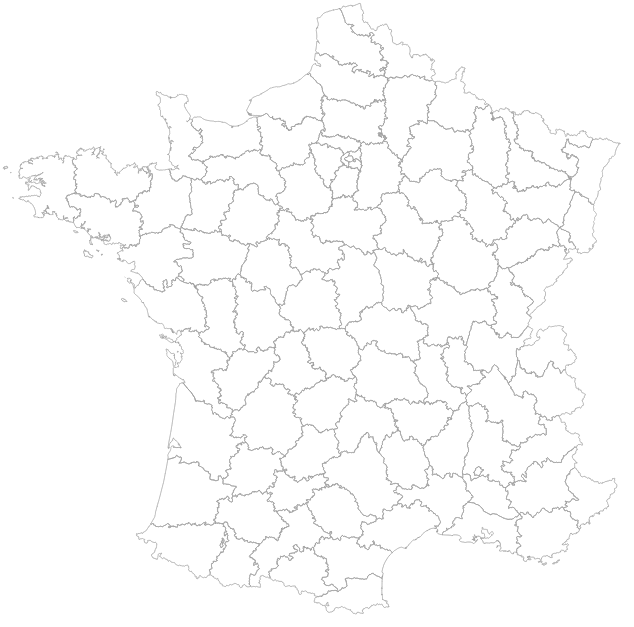









Lille
Paris
Strasbourg
Lyon
Toulouse
Bordeaux
Nantes
Rennes

Contributors
Users
Synthetic populations: Community






eqasim workshop in November 2025
Synthetic populations: Adaptations
Screenshot Sao Paolo
Copy & paste of the code base
Difficulty of maintenance
São Paulo
Almost same open data available as in France
California
Substantial modifiations required
Switzerland
Not based on open data
(for now)

Paper published in
Regional Studies, Regional Science (2020)

Paper presented at the Annual Meeting of the Transportation Research Board (2021)
Work in progress at ETH Zurich


Synthetic populations: Adaptations
Cairo: Extreme case, very few data available and not in the right format
Idea: Use data to generate "fake" input to the French pipeline and reuse the code!
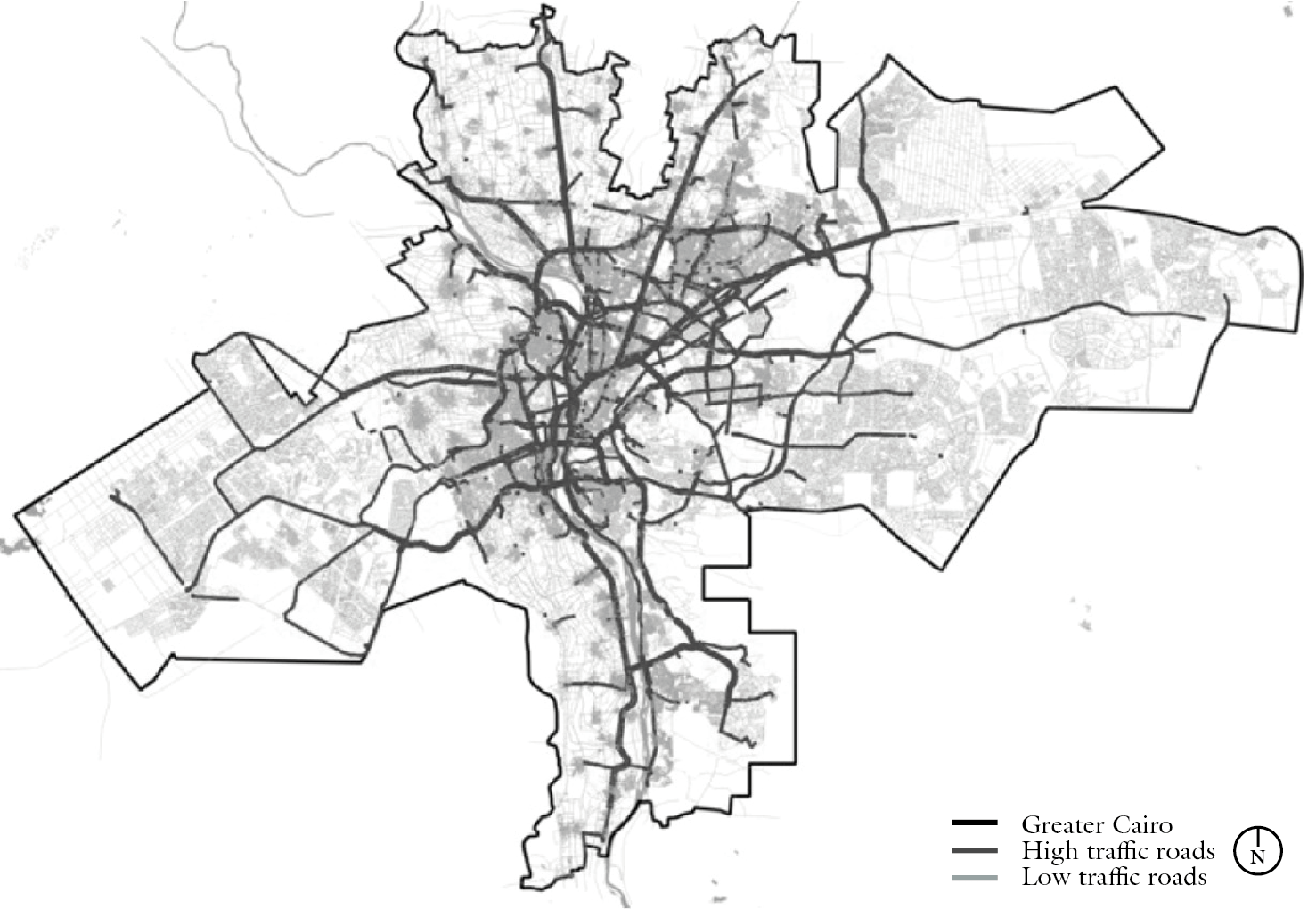
Gall, T., Vallet, F., Reyes Madrigal, L.M., Hörl, S., Abdin, A., Chouaki, T., Puchinger, J., 2023. Sustainable Urban Mobility Futures, Sustainable Urban Futures. Springer Nature Switzerland, Cham.


Synthetic populations: Adaptations
Cairo: Extreme case, very few data available and not in the right format
Idea: Use data to generate "fake" input to the French pipeline and reuse the code!
Bavaria: Set up a robust and replicable pipeline with data replacement

Hörl, S., Burianne, A., Natterer, E., Engelhardt, R., Müller, J. (2025) Towards a replicable synthetic population and agent-based transport model for Bavaria, paper presented at the 23rd International Conference on Practical applications of Agents and Multi-Agent Systems (PAAMS 2025), June 2025, Lille, France.



As part of the national project MINGA
Synthetic populations: Adaptations
Cairo: Extreme case, very few data available and not in the right format
Idea: Use data to generate "fake" input to the French pipeline and reuse the code!
Bavaria: Set up a robust and replicable pipeline with data replacement





As part of the national project MINGA
Hörl, S., Burianne, A., Natterer, E., Engelhardt, R., Müller, J. (2025) Towards a replicable synthetic population and agent-based transport model for Bavaria, paper presented at the 23rd International Conference on Practical applications of Agents and Multi-Agent Systems (PAAMS 2025), June 2025, Lille, France.

Synthetic populations: Outlook
Improvements of models along the synthesis chain
- In each step, models can be improved by more intelligent approaches from machine learning, deep learning, ...
- How can we benchmark them against each other?
Uncertainty analysis
- What impact does the replacement of one model have on the final output?
- Which steps cause the highest degree of uncertainty? Which ones should be updated with priority?
Context-sensitive population synthesis
- How can we make algorithms along the chain context-sensitive (infrastructure, access to work places, nature, ...)
Primary locations
Activity chains
Secondary locations
Persons


Complexity of synthetic populations
- Weekly or longer activity sequences
- Activity chains synchronized across household members
Synthetic populations: Scaling up
Use cases
- Scaling to new use cases (see Cairo, Munich)
- Standardize methods and computational tools


Application domains
- Today mostly use in transportation
- Large interest in the modeling of energy systems
- Further domains: disaster management, climate change adaption, ...
Transport modeling chain
Raw data
Synthetic population
Agent-based transport simulation
Use cases
Results


Transport modeling chain
Raw data
Synthetic population
Agent-based transport simulation
Use cases
Results


Agent-based simulation: Introduction

GTFS

OpenStreetMap
Synthetic demand
+
Driving car
Metro / Train
Work activity starts


Agent-based simulation: Introduction
Synthetic demand


Agent-based simulation: Introduction
Mobility simulation
Synthetic demand
Daily mobility plans


Agent-based simulation: Introduction
Decision-making
Mobility simulation
Synthetic demand







Experienced travel times, crowding, ...
Daily mobility plans


Agent-based simulation: Introduction
Decision-making
Mobility simulation
Synthetic demand














Experienced travel times, crowding, ...
Daily mobility plans


Agent-based simulation: Introduction
Decision-making
Mobility simulation
Synthetic demand
Experienced travel times, crowding, ...
Daily mobility plans
Update
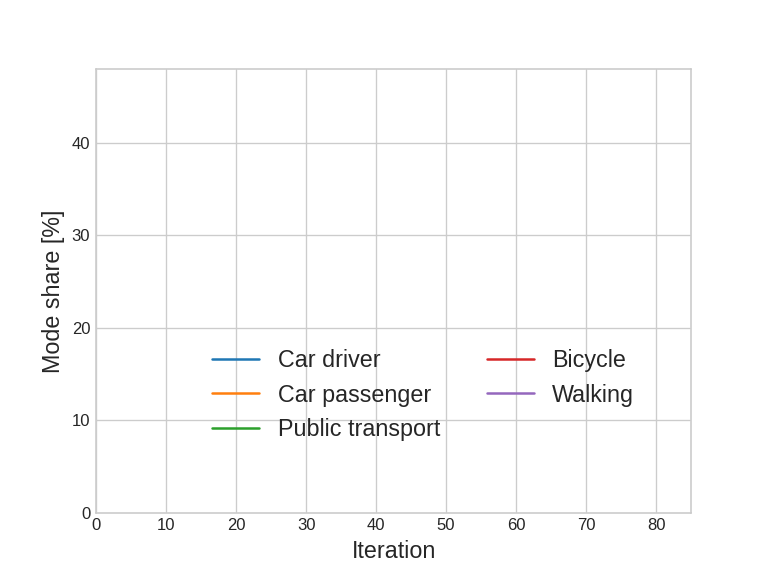


Agent-based simulation: Introduction
Decision-making
Mobility simulation
Synthetic demand
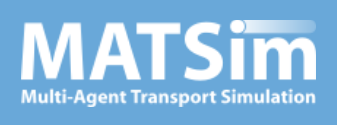
- Maintained by TU Berlin, ETH Zurich, (IRT SystemX)
- 50+ research users world-wide, SBB, Volkswagen, ...
- Contributor since ~2016
Mode shares
Traffic patterns
Emissions
Noise


Agent-based simulation: eqasim-java

eqasim-java: A streamlined set-up of MATSim for our standardized synthetic populations


Agent-based simulation: eqasim-java
eqasim-java: A streamlined set-up of MATSim for our standardized synthetic populations



eqasim
Detailed queue-based traffic simulation
Traffic
Agent-based simulation: eqasim-java


Multi-modal approach
Mobility simulation

Queue-based network simulation
- Car drivers (and passengers)
- Public transport
- Bicycle
- Walking
Agent-based simulation: eqasim-java
eqasim-java: A streamlined set-up of MATSim for our standardized synthetic populations



eqasim
Detailed queue-based traffic simulation
Traffic

1) Simulation using queue model
Agent-based simulation: eqasim-java
eqasim-java: A streamlined set-up of MATSim for our standardized synthetic populations



eqasim
Detailed queue-based traffic simulation
Traffic

1) Simulation using queue model
2) Tracking of emerging travel times for each link k in time bin τ
Agent-based simulation: eqasim-java
eqasim-java: A streamlined set-up of MATSim for our standardized synthetic populations



eqasim
Detailed queue-based traffic simulation
Traffic

1) Simulation using queue model

2) Tracking of emerging travel times for each link k in time bin τ
3) Use tracked travel times for routing in next decision-making step
Agent-based simulation: eqasim-java
eqasim-java: A streamlined set-up of MATSim for our standardized synthetic populations



eqasim
Detailed queue-based traffic simulation
Traffic based on volume-delay functions
Traffic
Agent-based simulation: eqasim-java
eqasim-java: A streamlined set-up of MATSim for our standardized synthetic populations



eqasim
Detailed queue-based traffic simulation
Traffic based on volume-delay functions
Traffic
1) Track flow in time bin τ for each link k
Agent-based simulation: eqasim-java
eqasim-java: A streamlined set-up of MATSim for our standardized synthetic populations



eqasim
Detailed queue-based traffic simulation
Traffic based on volume-delay functions
Traffic
1) Track flow in time bin τ for each link k
2) Calculate travel time according to VDF
Agent-based simulation: eqasim-java
eqasim-java: A streamlined set-up of MATSim for our standardized synthetic populations



eqasim
Detailed queue-based traffic simulation
Traffic based on volume-delay functions
Traffic
1) Track flow in time bin τ for each link k
2) Calculate travel time according to VDF
3) Use updated travel times during routing and decision-making

Agent-based simulation: eqasim-java
eqasim-java: A streamlined set-up of MATSim for our standardized synthetic populations



eqasim
Detailed queue-based traffic simulation
Traffic based on volume-delay functions
Traffic
1) Track flow in time bin τ for each link k
2) Calculate travel time according to VDF
3) Use updated travel times during routing and decision-making
4) Impose updated travel times in next iteration's traffic

Chouaki, T., & Hörl, S. (2025, January). A method for efficiently assessing the impact of local mobility services in large-scale agent-based simulations. 104th Annual Meeting of the Transportation Research Board (TRB 2025). 104th Annual Meeting of the Transportation Research Board (TRB 2025), Washington D.C., USA.
Agent-based simulation: eqasim-java
eqasim-java: A streamlined set-up of MATSim for our standardized synthetic populations



eqasim
Detailed queue-based traffic simulation
Traffic based on volume-delay functions
Co-evolutionary decision-making algorithm
Traffic
Decision-making
Agent-based simulation: eqasim-java
eqasim-java: A streamlined set-up of MATSim for our standardized synthetic populations



eqasim
Detailed queue-based traffic simulation
Traffic based on volume-delay functions
Co-evolutionary decision-making algorithm
Traffic
Decision-making







Score
Agent-based simulation: eqasim-java
eqasim-java: A streamlined set-up of MATSim for our standardized synthetic populations



eqasim
Detailed queue-based traffic simulation
Traffic based on volume-delay functions
Co-evolutionary decision-making algorithm
Traffic
Decision-making





Score



Agent-based simulation: eqasim-java
eqasim-java: A streamlined set-up of MATSim for our standardized synthetic populations



eqasim
Detailed queue-based traffic simulation
Traffic based on volume-delay functions
Co-evolutionary decision-making algorithm
Discrete choice models for behavioral simulation
Traffic
Decision-making
Agent-based simulation: eqasim-java
eqasim-java: A streamlined set-up of MATSim for our standardized synthetic populations



eqasim
Detailed queue-based traffic simulation
Traffic based on volume-delay functions
Co-evolutionary decision-making algorithm
Discrete choice models for behavioral simulation
Traffic
Decision-making
Agent-based simulation: eqasim-java
eqasim-java: A streamlined set-up of MATSim for our standardized synthetic populations



eqasim
Detailed queue-based traffic simulation
Traffic based on volume-delay functions
Co-evolutionary decision-making algorithm
Discrete choice models for behavioral simulation
Traffic
Decision-making
Estimate choice variables (routing)
Agent-based simulation: eqasim-java
eqasim-java: A streamlined set-up of MATSim for our standardized synthetic populations



eqasim
Detailed queue-based traffic simulation
Traffic based on volume-delay functions
Co-evolutionary decision-making algorithm
Discrete choice models for behavioral simulation
Traffic
Decision-making
Sampling
Hörl, S., & Balac, M. (2021). Introducing the eqasim pipeline: From raw data to agent-based transport simulation. Procedia Computer Science, 184, 712–719.
Hörl, S., Balac, M., & Axhausen, K., W. (2019, January). Pairing discrete mode choice models and agent-based transport simulation with MATSim. 98th Annual Meeting of the Transportation Research Board (TRB 2019). 98th Annual Meeting of the Transportation Research Board (TRB 2019), Washington D.C., USA.
Agent-based simulation: eqasim-java
eqasim-java: A streamlined set-up of MATSim for our standardized synthetic populations



eqasim
Detailed queue-based traffic simulation
Traffic based on volume-delay functions
Co-evolutionary decision-making algorithm
Discrete choice models for behavioral simulation
Traffic
Decision-making
Sampling
* tour-based
Hörl, S., & Balac, M. (2021). Introducing the eqasim pipeline: From raw data to agent-based transport simulation. Procedia Computer Science, 184, 712–719.
Hörl, S., Balac, M., & Axhausen, K., W. (2019, January). Pairing discrete mode choice models and agent-based transport simulation with MATSim. 98th Annual Meeting of the Transportation Research Board (TRB 2019). 98th Annual Meeting of the Transportation Research Board (TRB 2019), Washington D.C., USA.
Agent-based simulation: Discrete choice integration
Discrete choice-based decision-making
- Estimation (computational effort; correctness)
-
Only mode choice in the current form
- Realistic decisions with high probability
- "Use the model as is" is advantage in calibration
Mobility simulation
Mutation / Selection
Mobility simulation
Mode choice
Estimation
Simulation stabilized?
Simulation stabilized?
Estimation correct?
Scoring-based decision-making
-
Very flexible (departure time, ...)
-
"Stupid" decisions necessary
- Tedious calibration of parameters


Agent-based simulation: eqasim-java
eqasim-java: A streamlined set-up of MATSim for our standardized synthetic populations



eqasim
Detailed queue-based traffic simulation
Traffic based on volume-delay functions
Co-evolutionary decision-making algorithm
Discrete choice models for behavioral simulation
Standardized calibration procedure for France
Traffic
Decision-making
Agent-based simulation: Calibration


Capacity calibration
Household travel survey
Idea:
- Provide an open and accessible, well-calibrated agent-based simulation for Île-de-France
- Develop a standardized pipeline for the estimation of the discrete choice model and network calibration
Status:
- Under development in bits and pieces since ~2023
- Île-de-France simulation almost ready to be published!
EGT
Agent-based simulation: Calibration


Transit calibration
Capacity calibration
Household travel survey
Input: All trips of the survey that have been performed using public transport, with origin, destination and departure time.
EGT
Approach: Calibrate routing parameters of public transport routing algorithm (RAPTOR) to fit
(1) Distribution of legs by public transport mode
(2) Distribution of transfer counts
Adaptation of parameters
Distribution modes
Distribution transfers



Agent-based simulation: Calibration


Transit calibration
Freeflow calibration
Capacity calibration
Household travel survey
EGT
Input:
- A representative selection of car trips from the survey including origin, destination (and weight)
- Road network with speed limit travel times
Approach:
(1) Route trips using API (TomTom) without congestion (3am)
(2) Calibrate "crossing penalties" at nodes by road type


Agent-based simulation: Calibration


Transit calibration
Freeflow calibration
Capacity calibration
Household travel survey
EGT
Input:
- A representative selection of car trips from the survey including origin, destination (and weight)
- Road network with speed limit travel times
Approach:
(1) Route trips using API (TomTom) without congestion (3am)
(2) Calibrate "crossing penalties" at nodes by road type



Agent-based simulation: Calibration


Transit calibration
Freeflow calibration
Congestion model
Capacity calibration
Household travel survey
EGT
Input: A representative selection of car trips from the survey including origin, destination, departure time, and calculated free-flow travel times
Approach:
(1) Route trips using API (TomTom) with congestion (at trip departure time)
(2) Calibrate hourly correction factors

Linear regression
Agent-based simulation: Calibration


Transit calibration
Freeflow calibration
Congestion model
Model estimation
Capacity calibration
Household travel survey
EGT
Approach:
(1) Route all trips of the survey for all mode alternatives
(2) Estimate a multi-nomial logit model using Biogeme
- Automatic construction of zonal dummies (if requested)
- Modes: Car driver, car passenger, public transport, bicycle, walking
- Currently R2 = 0.52
- Value of time comparable to existing studies (Meunier & Quinet, ...)
- Automatic calculation and reporting of elasticities
Agent-based simulation: Calibration


Transit calibration
Freeflow calibration
Congestion model
Model estimation
Capacity calibration
Household travel survey
EGT
Approach:
(1) Route all trips of the survey for all mode alternatives
(2) Estimate a multi-nomial logit model using Biogeme
Focus: Parking model
- Parking costs obtained across Île-de-France from open web sources
- Calculation of "parking pressure"
- High model impact!

Registered vehicles inside IRIS
Road network inside IRIS
P =
* from INSEE data
Agent-based simulation: Calibration


Capacity calibration
Transit calibration
Freeflow calibration
Congestion model
Model estimation
Capacity calibration
Household travel survey
EGT
Approach:
(1) Implement choice model in agent-based simulation
(2) Verify point-to-point travel times between simulation and API
(3) Adjust a (global) capacity factor across the network
Comparison
Simulation
Capacity factor
Point-to-point travel times
* no flow comparison!
Agent-based simulation: Calibration


Capacity calibration
Transit calibration
Freeflow calibration
Congestion model
Model estimation
Capacity calibration
Household travel survey
EGT
Validation:
- Global mode share
- Mode share by distance
- CDF of travel times by mode
- Others possible; some within limits (traffic counts, transit counts, ...)

* not the latest results
Agent-based simulation: Calibration


Capacity calibration
Transit calibration
Freeflow calibration
Congestion model
Model estimation
Capacity calibration
Household travel survey
EGT
Validation:
- Global mode share
- Mode share by distance
- CDF of travel times by mode
- Others possible; some within limits (traffic counts, transit counts, ...)


* not the latest results
Agent-based simulation: Calibration


Capacity calibration
Transit calibration
Freeflow calibration
Congestion model
Model estimation
Capacity calibration
Household travel survey
EGT
Validation:
- Global mode share
- Mode share by distance
- CDF of travel times by mode
- Others possible; some within limits (traffic counts, transit counts, ...)


* not the latest results
Agent-based simulation: Calibration


Capacity calibration
Transit calibration
Freeflow calibration
Congestion model
Model estimation
Capacity calibration
Household travel survey
EGT
Validation:
- Global mode share
- Mode share by distance
- CDF of travel times by mode
- Others possible; some within limits (traffic counts, transit counts, ...)

* not the latest results
Agent-based simulation: Calibration


Capacity calibration
Transit calibration
Freeflow calibration
Congestion model
Model estimation
Capacity calibration
Household travel survey
EGT
Baseline simulation for Île-de-France ready to publish!
Fully automatized and replicable processing pipeline using snakemake



Capacity calibration
Transit calibration
Freeflow calibration
Congestion model
Model estimation
Capacity calibration
Household travel survey
EDGT, EMC2, ...
Agent-based simulation: Outlook
Can this be generalized to other cases?
Most likely!
!


Capacity calibration
Transit calibration
Freeflow calibration
Congestion model
Model estimation
Capacity calibration
Household travel survey
EDGT, EMC2, ...
Spatialization
Agent-based simulation: Outlook



Can this be generalized to other cases?
Most likely!
Balac, M., Hörl, S., & Schmid, B. (2024). Discrete choice modeling with anonymized data. Transportation, 51(2), 351–370.


Capacity calibration
Transit calibration
Freeflow calibration
Congestion model
Model estimation
Capacity calibration
Household travel survey
Spatialization

Lille
Paris
Strasbourg
Lyon
Toulouse
Bordeaux
Nantes
Rennes
Compare individual model results based on same structure
Agent-based simulation: Outlook
EDGT, EMC2, ...
Agent-based simulation: Outlook


Capacity calibration
Transit calibration
Freeflow calibration
Congestion model
Model estimation
Capacity calibration
Household travel survey
Spatialization

Lille
Paris
Strasbourg
Lyon
Toulouse
Bordeaux
Nantes
Rennes
Estimate a joint model for France?
EDGT, EMC2, ...
Transport modeling chain
Raw data
Synthetic population
Agent-based transport simulation
Use cases
Results


Transport modeling chain
Raw data
Synthetic population
Agent-based transport simulation
Use cases
Results


Automated taxi
Pickup
Dropoff
Use cases: On-demand mobility
- An operator centrally controls a fleet of vehicles
- Each vehicle is represented as an agent that receives instructions in each time step
-
Customer agents sent requests to be transported
- Objectives: maximize operator revenue, minimize empty distance, ...


Automated taxi
Pickup
Dropoff
Use cases: On-demand mobility
- An operator centrally controls a fleet of vehicles
- Each vehicle is represented as an agent that receives instructions in each time step
-
Customer agents sent requests to be transported
- Objectives: maximize operator revenue, minimize empty distance, ...

R1


Use cases: On-demand mobility
- Different dispatching strategies provide different outcomes in terms of empty distance, revenue, and wait times
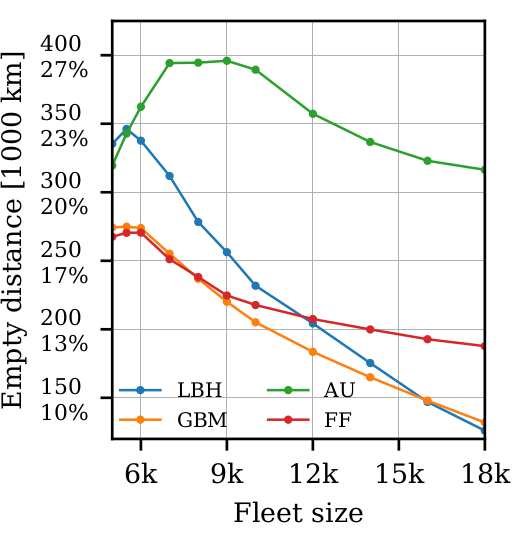
amodeus-science/amodeus

AI Driving Olympics challenge at NeurIPS 2018


Use cases: On-demand mobility
Cost model
Discrete choice model
Mobility simulation
Estimation
Fare per trip and km
Wait time
Outcomes
Passenger distance, empty distance
- The problem becomes even more interesting when customer agents have the choice to use the service or not (dynamic demand)



Use cases: On-demand mobility

- Provides an understanding of a mobility service that doesn't exist today
- Shows pathways for policy and regulation


Hörl, S., Becker, F., & Axhausen, K. W. (2021). Simulation of price, customer behaviour and system impact for a cost-covering automated taxi system in Zurich. Transportation Research Part C: Emerging Technologies, 123, 102974.
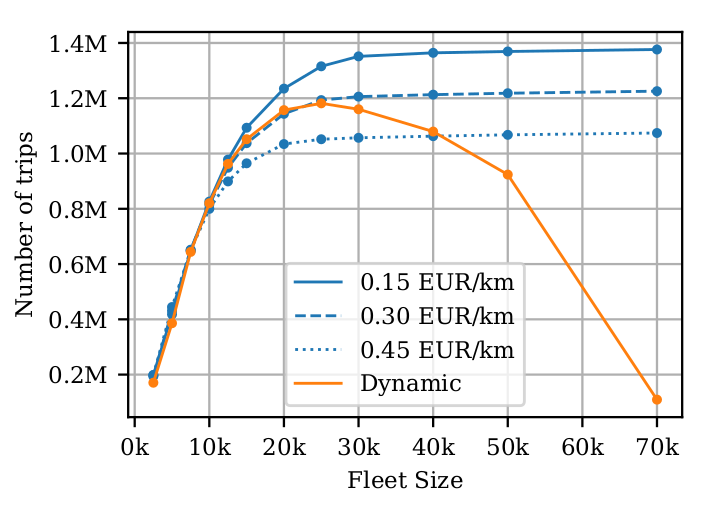
Use cases: On-demand mobility


Hörl, S., Balac, M., & Axhausen, K. W. (2019). Dynamic demand estimation for an AMoD system in Paris. IEEE Intelligent Vehicles Symposium (IV 2019), 260–266.
On-demand mobility: Intermodality
- How to combine on-demand mobility systems with public transport?
- How to take into account rejection rates in discrete choice models?
- Various other publications ...
Chouaki, T., Hörl, S., Puchinger, J., 2023. Towards Reproducible Simulations of the Grand Paris Express and On-Demand Feeder Services, in: 102nd Annual Meeting of the Transportation Research Board (TRB 2023). Washington D.C, United States.
Chouaki, T., Hörl, S., Puchinger, J., 2023. Control-based integration of rejection rates into endogenous demand ride-pooling simulations, in: 8th International Conference on Models and Technologies for Intelligent Transportation Systems (MT-ITS 2023). IEEE, Nice, France, pp. 1–6.


- How to combine on-demand mobility systems with public transport?
- How to take into account rejection rates in discrete choice models?
- Various other publications ...
Chouaki, T., Hörl, S., Puchinger, J., 2023. Towards Reproducible Simulations of the Grand Paris Express and On-Demand Feeder Services, in: 102nd Annual Meeting of the Transportation Research Board (TRB 2023). Washington D.C, United States.
Chouaki, T., Hörl, S., Puchinger, J., 2023. Control-based integration of rejection rates into endogenous demand ride-pooling simulations, in: 8th International Conference on Models and Technologies for Intelligent Transportation Systems (MT-ITS 2023). IEEE, Nice, France, pp. 1–6.



On-demand mobility: Intermodality
- How to combine on-demand mobility systems with public transport?
- How to take into account rejection rates in discrete choice models?
- Various other publications ...
Chouaki, T., Hörl, S., Puchinger, J., 2023. Towards Reproducible Simulations of the Grand Paris Express and On-Demand Feeder Services, in: 102nd Annual Meeting of the Transportation Research Board (TRB 2023). Washington D.C, United States.
Chouaki, T., Hörl, S., Puchinger, J., 2023. Control-based integration of rejection rates into endogenous demand ride-pooling simulations, in: 8th International Conference on Models and Technologies for Intelligent Transportation Systems (MT-ITS 2023). IEEE, Nice, France, pp. 1–6.



On-demand mobility: Intermodality
On-demand mobility: Algorithmic fairness
Do dispatching algorithms discriminate against certain user groups?
- Standard algorithms aim at minimizing wait times, travel times and maximizing revenue
- Do standard algorithms reject mobility-impaired person with longer interactions or larger groups more frequently than others?
-
Yes, they do!
- Can we mitigate the problem?
- Opens a whole new section of research in fleet management
Chouaki, T., Hörl, S., 2024. Comparative assessment of fairness in on-demand fleet management algorithms, in: The 12th Symposium of the European Association for Research in Transportation (hEART). Espoo, Finland.




Infrastructure: Charging behaviour


How do people choose between public, home and work chargers for their electric cars?
- Very few data available (surveys and use)
-
Idea
- Assign electric vehicles to the population, then force them to charge (to avoid zero SoC)
- What is their ideal charging configuration, given the provided infrastructure?
- Collective charging strategy selection process (home, work, public) through maximization of scores
- Negative scores for zero SoC, falling below a minimum SoC during the day or at the end, monetary costs, ...



Infrastructure: Charging behaviour


How do people choose between public, home and work chargers for their electric cars?
- Very few data available (surveys and use)
-
Idea
- Assign electric vehicles to the population, then force them to charge (to avoid zero SoC)
- What is their ideal charging configuration, given the provided infrastructure?
- Collective charging strategy selection process (home, work, public) through maximization of scores
- Negative scores for zero SoC, falling below a minimum SoC during the day or at the end, monetary costs, ...



Transport policy: Limited traffic zones



What is the impact of the Limited Traffic Zone in the center of Paris?
- Rule: Non-residents that are not performing an activity in the center of Paris are not allowed to go through the center zone
- We can analyze which persons (agents) are affected by that policy
- We can measure the impact of the policy on the surrounding traffic
- High level estimation of traffic and emission impact

Residents
Transit
Visitors
Transport policy: Limited traffic zones


What is the impact of the Limited Traffic Zone in the center of Paris?
- Rule: Non-residents that are not performing an activity in the center of Paris are not allowed to go through the center zone
- We can analyze which persons (agents) are affected by that policy
- We can measure the impact of the policy on the surrounding traffic
- High level estimation of traffic and emission impact


Transport policy: Limited traffic zones


What is the impact of the Limited Traffic Zone in the center of Paris?
- Rule: Non-residents that are not performing an activity in the center of Paris are not allowed to go through the center zone
- We can analyze which persons (agents) are affected by that policy
- We can measure the impact of the policy on the surrounding traffic
- High level estimation of traffic and emission impact

Overall flow related to the ZTL
Transport policy: Limited traffic zones




Transit flow related to the ZTL
What is the impact of the Limited Traffic Zone in the center of Paris?
- Rule: Non-residents that are not performing an activity in the center of Paris are not allowed to go through the center zone
- We can analyze which persons (agents) are affected by that policy
- We can measure the impact of the policy on the surrounding traffic
- High level estimation of traffic and emission impact
Transport policy: Limited traffic zones



Transit flow related to the ZTL

Difference after introduction of ZTL
What is the impact of the Limited Traffic Zone in the center of Paris?
- Rule: Non-residents that are not performing an activity in the center of Paris are not allowed to go through the center zone
- We can analyze which persons (agents) are affected by that policy
- We can measure the impact of the policy on the surrounding traffic
- High level estimation of traffic and emission impact
Transport policy: Parcel deliveries


A detailed study of environmental policies on parcel deliveries
- Obtaining a daily synthetic parcel demand based on a synthetic population for Lyon and statistics (Gardrat)
- Identifying all logistics centers in the area
- Cost structures (vehicles, drivers, operational) for ICVs and BEVs (small, medium, large)
- Definition of one Heterogeneous Fleet VRP per logistics center, sensitive to cost inputs
- Testing of CO2 tax, ICV tax, qualitative policies


Transport policy: Parcel deliveries



A detailed study of environmental policies on parcel deliveries
- Obtaining a daily synthetic parcel demand based on a synthetic population for Lyon and statistics (Gardrat)
- Identifying all logistics centers in the area
- Cost structures (vehicles, drivers, operational) for ICVs and BEVs (small, medium, large)
- Definition of one Heterogeneous Fleet VRP per logistics center, sensitive to cost inputs
- Testing of CO2 tax, ICV tax, qualitative policies
Hörl, S., Briand, Y., & Puchinger, J. (2025). Decarbonization policies for last-mile parcels: A replicable open-data case study for Lyon. Transportation Research Part D: Transport and Environment, 146, 104893.

Use cases: Community












Lille
Paris
Strasbourg
Lyon
Toulouse
Bordeaux
Nantes
Rennes

Contributors
Users






Paris
Bordeaux
Nantes


Impacts of noise on the population
- Connection with the open-source NoiseModeling framework
- Estimation of per-agent noise impact over an entire day
Le Bescond, V., Can, A., Aumond, P., & Gastineau, P. (2021). Open-source modeling chain for the dynamic assessment of road traffic noise exposure. Transportation Research Part D: Transport and Environment, 94, 102793.
Hankach, P., Le Bescond, V., Gastineau, P., Vandanjon, P.-O., Can, A., & Aumond, P. (2024). Individual-level activity-based modeling and indicators for assessing construction sites noise exposure in urban areas. Sustainable Cities and Society, 101, 105188.


Use cases: Community


Lyon


Access to green spaces and quiet areas
- Individual-based geographic analysis of green space access per person
- Recommendations on urban development
Luquezi, L. G., Le Bescond, V., Aumond, P., Gastineau, P., & Can, A. (2025). Assessing accessibility to quiet and green areas at the city scale using an agent-based transport model. Landscape and Urban Planning, 263, 105452.

Use cases: Community

Lille


Mobility pricing and park + ride
- Implementation of a city tax to be paid when entering the city by car
- Development of additional park & ride infrastructure
Diallo, A. O., Lozenguez, G., Doniec, A., & Mandiau, R. (2023). Agent-Based Approach for (Peri-)Urban Inter-Modality Policies: Application to Real Data from the Lille Metropolis. Sensors, 23(5).


Diallo, A. O., Lozenguez, G., Doniec, A., & Mandiau, R. (2025). Utility-based agent model for intermodal behaviors: A case study for urban toll in Lille. Applied Intelligence, 55(4), 282.
Use cases: Community

Lille
Lyon
Toulouse
Rennes


Shared mobility services in Rennes
- Connection with shared mobility simulation package Starling
Manout, O., Diallo, A. O., & Gloriot, T. (2024). Implications of pricing and fleet size strategies on shared bikes and e-scooters: A case study from Lyon, France. Transportation.
Leblond, V., Desbureaux, L., & Bielecki, V. (2020). A new agent-based software for designing and optimizing emerging mobility services: Application to city of Rennes. European Transport Conference 2020, 17.


Dimensioning of shared bicycle supply in Lyon
- Agent-based simulations on pricing and fleet sizing

Use cases: Community
Communication: Interface development



TERRITORIA price 2024
with Paris Saclay

- Ambition to provide project results through interactive interfaces




Raw data
Synthetic population
Agent-based transport simulation
Use cases
Results
Transport modeling chain


Raw data
Synthetic population
Agent-based transport simulation
Use cases
Results
Replicability?


Raw data
Synthetic population
Agent-based transport simulation
Use cases
Results
Replicability?
Yes, eqasim-synpop for France and a handful of other cases.
Working on generalizing the methodology.


Raw data
Synthetic population
Agent-based transport simulation
Use cases
Results
Replicability?
Yes, eqasim-synpop for France and a handful of other cases.
Working on generalizing the methodology.
Partly, eqasim-java is accessible. Goal to publish a calibrated fully replicable simulation for Île-de-France in the coming months.


Raw data
Synthetic population
Agent-based transport simulation
Use cases
Results
Replicability?
Yes, eqasim-synpop for France and a handful of other cases.
Working on generalizing the methodology.
Partly, eqasim-java is accessible. Goal to publish a calibrated fully replicable simulation for Île-de-France in the coming months.
Using the new baseline simulation, our goal is to publish upcoming studies in a fully replicable way.




Outlook: Surrogate modeling
Surrogate models
- Idea: Approximate the results of heavy, large-scale agent-based models
- Evaluate policies, service configurations, ... within seconds
- Various approaches are available - can they be refined for the transportation context?
Detailed ABMS
Surrogate model
Inputs
Outputs (KPIs)
Learning
Hours, days, ...
Seconds!
Outlook: Surrogate modeling
Natterer, E. S., Rao, S. R., Tejada Lapuerta, A., Engelhardt, R., Hörl, S., & Bogenberger, K. (2025). Machine learning surrogates for agent-based models in transportation policy analysis. Transportation Research Part C: Emerging Technologies, 180, 105360.



Outlook: Surrogate modeling


Detailed ABMS
Surrogate model
Inputs
Outputs (KPIs)
Learning
Hours, days, ...
Seconds!
A standardized protocol to set up surrogates for agent-based transport models
- What are the relevant inputs / outputs?
- Which surrogate architectures work best?
- Which learning algorithms work best? (efficiency vs. solution quality)
Outlook: Surrogate modeling


Example: On-demand mobility service design
Automated generation of synthetic populations in France
Automated calibration of baseline simulations
Simulation components for on-demand mobility services
Generate a large database of ABMS
(1) in different territories
(2) with different operating areas
(3) with different fleet sizes
(4) with different service levels
(5) ...

Outlook: Surrogate modeling


Example: On-demand mobility service design

Learning
Surrogate model
Service configuration
KPIs

Reinforcement learning
Optimal configuration
* with design constraints
Service design agent
Outlook: Surrogate modeling


Example: On-demand mobility service design



A map of optimal deployment strategies for on-demand mobility services across France
Larger scientific context
Replicability and robustness
- Agent-based models required to assess modern technologies and policies
- Limited confidence due to the lack of standardized evaluation and validation mechanisms
- First step is to provide full transparency and replicability
Connecting agent-based models and surrogate approaches
- Not to replace agent-based models (ability to explore counter-factual cases)
- Allow exploration of larger variety of use cases and policy / service optimziation
- Increase practical planning relevance of agent-based models



Thank you!
sebastian.horl@irt-systemx.fr

Icons throughout the presentation: https://fontawesome.com
Website
Contact


Large-scale agent-based transport simulations in France
By Sebastian Hörl
Large-scale agent-based transport simulations in France
CIRED, 17 October 2025
- 128



